A conserved influenza A virus nucleoprotein code controls specific viral genome packaging
- PMID: 27650413
- PMCID: PMC5035998
- DOI: 10.1038/ncomms12861
A conserved influenza A virus nucleoprotein code controls specific viral genome packaging
Abstract
Packaging of the eight genomic RNA segments of influenza A viruses (IAV) into viral particles is coordinated by segment-specific packaging sequences. How the packaging signals regulate the specific incorporation of each RNA segment into virions and whether other viral or host factors are involved in this process is unknown. Here, we show that distinct amino acids of the viral nucleoprotein (NP) are required for packaging of specific RNA segments. This was determined by studying the NP of a bat influenza A-like virus, HL17NL10, in the context of a conventional IAV (SC35M). Replacement of conserved SC35M NP residues by those of HL17NL10 NP resulted in RNA packaging defective IAV. Surprisingly, substitution of these conserved SC35M amino acids with HL17NL10 NP residues led to IAV with altered packaging efficiencies for specific subsets of RNA segments. This suggests that NP harbours an amino acid code that dictates genome packaging into infectious virions.
Figures
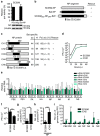

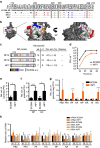
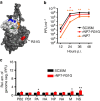
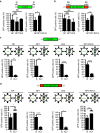
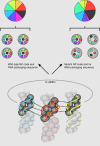
Similar articles
-
Packaging of the Influenza Virus Genome Is Governed by a Plastic Network of RNA- and Nucleoprotein-Mediated Interactions.J Virol. 2019 Feb 5;93(4):e01861-18. doi: 10.1128/JVI.01861-18. Print 2019 Feb 15. J Virol. 2019. PMID: 30463968 Free PMC article.
-
Functionality of IAV packaging signals depends on site-specific charges within the viral nucleoprotein.J Virol. 2024 Apr 16;98(4):e0197223. doi: 10.1128/jvi.01972-23. Epub 2024 Mar 12. J Virol. 2024. PMID: 38470155 Free PMC article.
-
Genome-wide analysis of influenza viral RNA and nucleoprotein association.Nucleic Acids Res. 2017 Sep 6;45(15):8968-8977. doi: 10.1093/nar/gkx584. Nucleic Acids Res. 2017. PMID: 28911100 Free PMC article.
-
RNA Sequence Features Are at the Core of Influenza A Virus Genome Packaging.J Mol Biol. 2019 Oct 4;431(21):4217-4228. doi: 10.1016/j.jmb.2019.03.018. Epub 2019 Mar 23. J Mol Biol. 2019. PMID: 30914291 Free PMC article. Review.
-
Packaging signal of influenza A virus.Virol J. 2021 Feb 17;18(1):36. doi: 10.1186/s12985-021-01504-4. Virol J. 2021. PMID: 33596956 Free PMC article. Review.
Cited by
-
Hybrid inorganic-organic capsules for efficient intracellular delivery of novel siRNAs against influenza A (H1N1) virus infection.Sci Rep. 2017 Mar 7;7(1):102. doi: 10.1038/s41598-017-00200-0. Sci Rep. 2017. PMID: 28273907 Free PMC article.
-
Selective Genome Packaging Mechanisms of Influenza A Viruses.Cold Spring Harb Perspect Med. 2021 Jul 1;11(7):a038497. doi: 10.1101/cshperspect.a038497. Cold Spring Harb Perspect Med. 2021. PMID: 32839251 Free PMC article. Review.
-
Bat Influenza Viruses: Current Status and Perspective.Viruses. 2021 Mar 25;13(4):547. doi: 10.3390/v13040547. Viruses. 2021. PMID: 33805956 Free PMC article. Review.
-
Generation of bat-derived influenza viruses and their reassortants.Sci Rep. 2019 Feb 4;9(1):1158. doi: 10.1038/s41598-018-37830-x. Sci Rep. 2019. PMID: 30718752 Free PMC article.
-
Role of influenza A virus NP acetylation on viral growth and replication.Nat Commun. 2017 Nov 2;8(1):1259. doi: 10.1038/s41467-017-01112-3. Nat Commun. 2017. PMID: 29097654 Free PMC article.
References
Publication types
MeSH terms
Substances
Grants and funding
LinkOut - more resources
Full Text Sources
Other Literature Sources
Miscellaneous

